Cross-type points, assist points, points sensitive to f/2.8 – what do manufacturers mean by all these terms? Matt Golowczynski explains
If you run through a camera’s spec sheet, you’ll probably find some of the most cryptic information relates to its autofocusing system. Line, cross-type and dual cross-type AF points, points that work with certain lenses and not others, and points that you can’t even access – making sense of it all can be tough work.
Focusing systems, particularly those inside pro-level DSLRs, are so sophisticated and comprehensive in the degree of control they offer that manufacturers have resorted to publishing entire brochures to these alone. The following article explains the terminology manufacturers use when describing the capabilities of their AF systems. Armed with this, you should be able to get to know your camera’s focusing system a little better, or alternatively, be better informed when it comes to choosing a new body.
Much of the following applies to DSLRs, although the systems inside compact system cameras are explained further on.
Line and cross-type points
DSLRs typically offer autofocus systems with around nine points at a minimum, while professional models increase this to as much as 153 (at the time of writing). The points available to you are visible when you look through the viewfinder – usually appearing as small dots or boxes – and each of these can be placed over a subject to help the camera find focus.
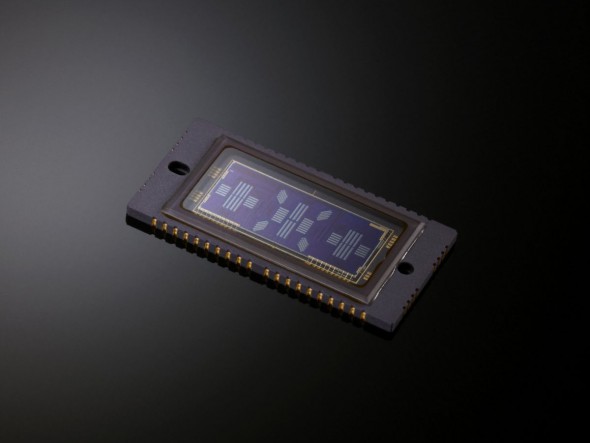
The AF sensor found inside the Canon EOS 1D X
These points correspond with physical sensors, which are arranged on a larger sensor underneath your camera’s mirror. Each sensor can be either a line or a cross of some kind, the latter comprising two lines that are arranged perpendicular to one another, thus forming a cross shape. A line sensor is sensitive to details in the direction perpendicular to its orientation – so, a vertical sensor will be sensitive to horizontal details, and a horizontal one sensitive to vertical details.
It follows then that a cross-type sensor is sensitive to both horizontal and vertical details (assuming it is arranged over vertical and horizontal axes), and this makes it more sensitive than a line sensor. As a general rule, the more cross-type points a system has the more sensitive it’s likely to be, although this is only one part of an autofocus system’s sensitivity. Dual cross-type points simply have two crosses at each location for even greater sensitivity than cross-type points. So, there will be one horizontal line, one vertical line and two diagonal lines, the combination essentially forming an asterisk-like shape. These tend to only be included in professional models.
Focusing systems are designed to offer enhanced sensitivity in their centre than at the side. Some systems, for example, may offer a single cross-type point in the centre of the frame and standard (line) points around it. If you’ve ever tried to focus on a subject using one of the peripheral points and found it to be significantly less sensitive than the central points, this is partly the reason why this is the case. Many cameras now, however, offer all-cross-type systems for enhanced sensitivity, which theoretically means that each point is as sensitive as any other – yet, the issue of how sensitive an AF point is doesn’t stop there.
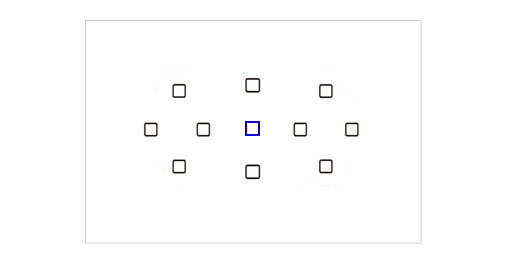
Manufacturers sometimes indicate the number and location of cross-type points with diagrams. Here, the system has 11 points in total and a single cross-type point in the centre of the frame.
Sensitivity
Manufacturers often state in their spec sheets that an AF point is sensitive to, or effective at, a particular aperture, or that it is cross type with lenses at a particular aperture, usually f/2.8 or f/4. What this means is that for a point to perform as best as it can, or even to be available for use at all, it requires you to use a lens with a maximum aperture of a particular minimum width.
So why is this? DSLRs normally autofocus at the widest aperture, regardless of what aperture you set on the body, in order to admit as much light as possible to perform focusing. The aperture only changes to what you’ve selected just prior to the exposure taking place. It’s for this reason that the viewfinder also stays at the same brightness, as otherwise it would darken as you select smaller apertures; if your camera has a depth-of-field preview function, you can seen this in action by selecting a small aperture and activating the function.
So what happens if you have a point that’s sensitive to f/2.8 but you use a lens with a much smaller maximum aperture? The point may still work but it may not be as sensitive as it could be. For example, a cross-type sensor may simply function as a less sensitive line sensor. This is one lesser-mentioned benefit of wide-aperture lenses; parts of the AF system typically become more sensitive when they are used. It’s possible, for example, that a number of points perform as highly sensitive dual cross-type points when a lens with a maximum aperture of f/2.8 lens is used, and drop to being more standard cross-type points when a lens with a maximum aperture of f/4 is used. Cross-type points sensitive to particularly wide apertures are also more accurate than smaller-aperture sensors (such as f/5.6 or f/8) and by admitting more light than standard lenses they allow for easier focusing in low-light conditions.
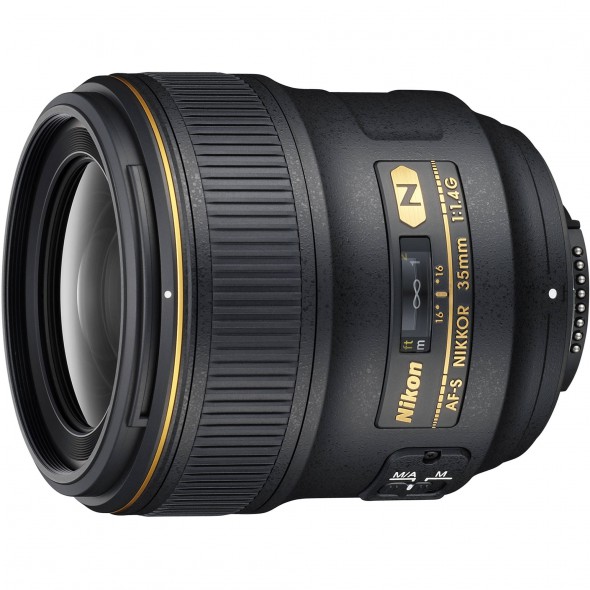
Wide-aperture lenses can help a focusing system perform to its best.
In professional bodies you may notice points in the centre of the frame are still cross type at apertures as small as f/5.6 or f/8. This makes it easier for professional users to use telephoto lenses in conjunction with teleconverters (which Canon calls Extenders). The reason for this is that teleconverters have the effect of reducing maximum aperture, with a one-stop reduction when using a 1.3x teleconverter and a two-stop reduction with a 2x teleconverter. As described above, this has the potential to affect the performance of camera’s autofocus system. However, if a manufacturer ensures cross-type performance of a number of AF points at smaller apertures, a photographer can slightly compromise the maximum aperture of a lens with a teleconverter knowing that certain AF points will still be performing as best as they can.
So, a wildlife photographer using a 500mm f/4 lens with a 1.3x teleconverter would be effectively using a lens equivalent to 650mm with a maximum aperture of f/5.6 (one stop smaller than f/4). An AF system with cross-type points sensitive to f/5.6 would still see these points performing to the best of their ability with such a combination. If, however, a photographer were to use a 500mm f/5.6 lens with the same extender, the result would be a 650mm lens with an f/8 aperture (as f/8 is one stop smaller than f/5.6), which would compromise the performance of these points.
Working range
Another thing manufacturers often state is a working range for the focusing system measured in exposure values (EV) and given at a standard sensitivity and temperature, usually ISO 100 at 23°C (heat can physically affect AF sensor modules). Budget DSLRs will typically offer a range of 0EV as a minimum and 18EV at the other end, while professional models may increase the former figure to -2EV or even -4EV. It’s the lower figure in the range that is the most important, as this indicates how well a camera can continue to focus in low light. A professional camera with a figure of -4EV will be able to focus in light levels twice as low as a camera -3EV, which itself will be able to focus in light levels twice as low as camera with a -2EV limit. So, as a general rule, the lower the better. On some models there may be separate working range for the more sensitive central point to the peripheral ones.

A focusing system with a broader working range can often focus quickly in low light where cheaper cameras may struggle
Available points and assist points
A manufacturer may state that a camera has a certain number of AF points but when you look through the viewfinder you may not be able to see anywhere near this amount. Alternatively, you may notice that some can be selected and other cannot. To give an example, Nikon’s latest D500 offers 153 focusing points but only 55 are available for selection. Canon’s now-retired EOS 5D Mark II offered nine standard AF points, but also six assist points in its centre, which you couldn’t even see, let alone select.
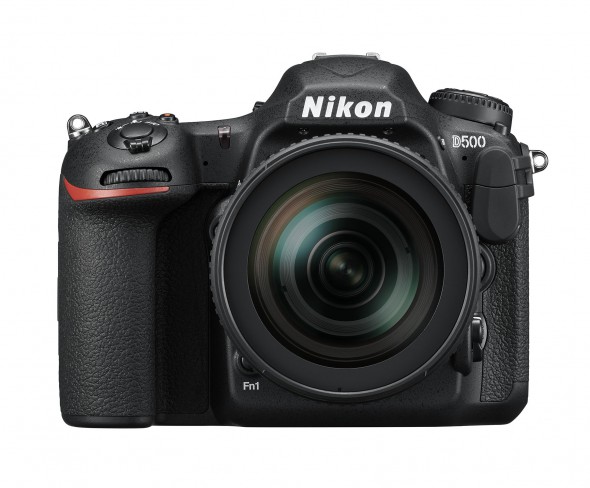
Nikon’s D500 has 153 AF points in total, although only 55 of these can be manually selected.
The purpose of these is to help the other points, particularly when it comes to moving subjects. When focusing on a moving subject, it’s possible that the subject shifts slightly to a position that is not directly covered by another focusing point. Having an assist point allows the camera to keep a better track of such a subject so that the system doesn’t lose it. These points are often positioned so closely to selectable points that there’s not much use offering them for selection; the six invisible points on the Canon EOS 5D Mark II, for example, were all located within the tiny spot-metering circle in the centre of the array. This was revised in the EOS 5D Mark III for the AF point expansion feature, which used standard, visible points to assist a main point.
Note: AF Assist points and AF Assist lamps are two different things. The latter is the small light on the front of many cameras that helps the focusing system to quickly lock onto a subject, particularly in low light.
How do compact system cameras vary?
The above relates to a system of focusing known as phase-detect autofocusing. This refers to the way in which focusing is performed in camera, using a separate autofocus sensor. Because of their construction, compact system cameras do not offer this sensor and have traditionally focused using a different approach known as contrast-detect autofocus. This uses the main sensor inside the camera and works by analysing the contrast of a scene at different focus positions to determine where this is highest (and so where the subject is in focus).
This approach is potentially more accurate than phase-detect autofocusing but has long had the disadvantage of being slower by comparison. In the last few years, however, manufacturers have fused the two principles into hybrid phase- and contrast-detect autofocus systems, incorporating the phase-detect functionality onto the pixels of the main imaging sensors inside the cameras – and today, these systems rival those inside DSLRs for speed.
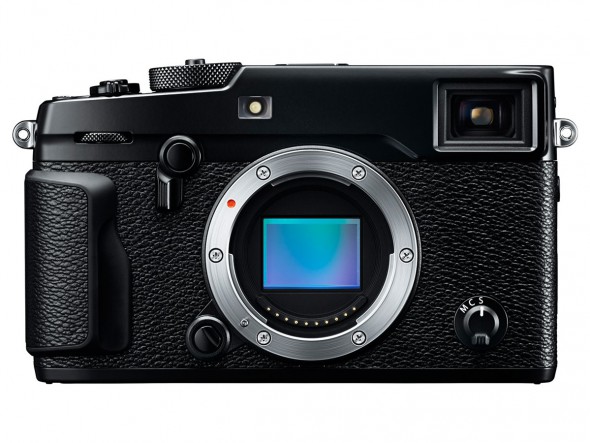
Fujifilm’s X-Pro 2 is one of a number of cameras that incorporates a hybrid system with both phase- and contrast-detect AF.
So what of all of the above applies to compact system cameras? Manufacturers will still typically state a working range for the system to indicate low-light performance, but because of how focusing is determined there are no line or cross-type points.
You may also see figures for phase-detect and contrast-detect AF points, with a high number of phase-detect points usually being desirable. Another thing to look at is the spread of these across the sensor; it’s possible to have these extend right up to the peripheries of the frame, which can help with capturing off-centre subjects or when tracking moving subjects.
About the Author
Matt Golowczynski is a London-based photographer and technical journalist who has written for a range of print and online magazines. For more information and to see more of his work visit his website.

